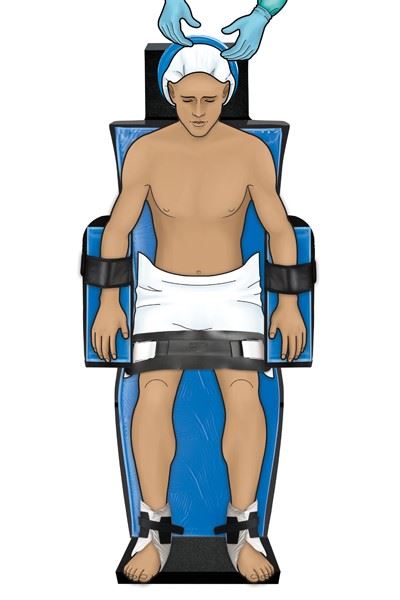-
Home
-
The Importance of Patient Safety Straps: Fowler’s Position
The Importance of Patient Safety Straps: Fowler’s Position
May 7, 2024
 Patient safety is a critical component of healthcare, particularly in ensuring proper positioning during treatment and recovery. Safety straps are essential for preventing falls and other position-related injuries when positioning patients in Fowler's position. This article discusses the benefits, methodologies, and best practices associated with the use of safety straps when the patient is in Fowler’s position.
Patient safety is a critical component of healthcare, particularly in ensuring proper positioning during treatment and recovery. Safety straps are essential for preventing falls and other position-related injuries when positioning patients in Fowler's position. This article discusses the benefits, methodologies, and best practices associated with the use of safety straps when the patient is in Fowler’s position.
Understanding the Fowler's Position
Fowler's position requires the head of the patient’s bed or surgical table to be elevated at an angle between 45 degrees and 60 degrees with the knees slightly bent. This is a common position used in medical settings for patients experiencing respiratory distress or undergoing certain medical procedures.
Variations of this position include semi Fowler's (at 30 degrees) and high Fowler's (at 90 degrees). This flexibility helps meet the patient’s individual needs, aiding with chest expansion, improved breathing, pressure ulcer prevention, and alleviating respiratory distress.
Importance of Patient Safety Straps
Safety straps are crucial in ensuring that patients remain in the intended position without compromising their comfort or circulation. They help prevent the patient from sliding down the bed, reduce the risk of falls and associated injuries, and enhance patient comfort by providing a sense of security without restricting natural movement excessively. Designed with comfort and security in mind, these straps are usually made of soft, flexible materials with a secure locking mechanism, such as a hook-and-loop closure.
How Do Safety Straps Work?
Patient safety straps gently but firmly hold the patient in place, significantly reducing the risk of falls and aiding in the successful execution of various medical and surgical procedures.
Best Practices
Proper preparation and use are paramount when using patient safety straps in any application. The basic best practices for patient safety strap use include assessment, planning, application, monitoring, adjustment, education, and communication.
- Assessment and Planning: Before applying safety straps, a thorough patient assessment is crucial to determine the most appropriate type and positioning of the straps. Consider the patient's comfort, the procedure's requirements, and any specific medical conditions.
- Proper Application: Ensure that the straps are snug but not overly tight, avoiding undue pressure that could lead to discomfort or circulation issues. The straps should secure the patient adequately without hindering necessary physiological functions or access to surgical sites.
- Monitoring and Adjustment: Continuous monitoring is necessary to ensure that the straps remain secure and the patient's position does not compromise their health or the procedure's success. Adjustments should be made as needed to maintain safety and comfort.
- Education and Communication: It is important to educate the patient about the purpose of the safety straps and the importance of maintaining the prescribed position. Clear communication can alleviate anxiety and increase cooperation.
Prevention of Pressure Ulcers
Regular assessment for signs of pressure or distress at strap contact points is crucial when using patient safety straps. Repositioning strategies and protective padding may be employed to mitigate the risk of pressure injuries, especially during prolonged procedures.
The use of safety straps in Fowler's position is a simple yet effective measure to enhance patient safety and comfort. Proper use of these devices not only prevents potential injuries but also helps improve patient outcomes by ensuring that patients remain in the optimal position for treatment and recovery.
Want to learn more? Explore our additional resources on patient positioning and patient safety straps: